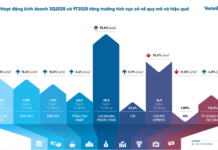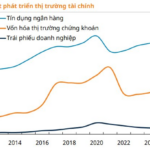
Illustrative image. (Source: Vietnam+)
|
General Secretary Tô Lâm has signed and issued the Conclusion of the 13th Central Committee of the Communist Party of Vietnam (dated November 12, 2025) on continuing to build and perfect the organizational structure of the political system in the coming period (Conclusion No. 210-KL/TW).
The Vietnam News Agency is honored to present the full text of Conclusion No. 210-KL/TW:
I- SITUATION
After 8 years of implementing Resolution No. 18-NQ/TW[1], with a strategic vision and long-term orientation for the overall model of the political system, and with the highest determination and effort, the Party Central Committee, the Politburo, and the Secretariat have led and directed all levels, sectors, agencies, units, and localities to proactively and creatively implement the resolution effectively. As a result, the goals set by Resolution No. 18-NQ/TW for 2030 have been surpassed 5 years ahead of schedule, marking a significant turning point in the implementation of Party resolutions in the new context.
Notable achievements include:
(1) The organizational structure of Party agencies, state agencies, the Vietnam Fatherland Front, and socio-political organizations from the central to local levels has been reorganized to be more streamlined, efficient, and effective. This has reduced the number of agencies and units under the central government and provincial levels, as well as internal departments and staffing, leading to significant savings in regular expenditures and increased investment in development and social welfare.
(2) The new organizational model has been implemented alongside the merger of administrative units at the provincial and communal levels. This includes reorganizing the military, police (at the local level), inspection, court, and procuracy systems, as well as sectoral management agencies. Party organizations at the local level have been rearranged in sync with other political system entities, and socio-political organizations and mass associations under the Vietnam Fatherland Front at all levels have been restructured as directed by the Party and State.
(3) Comprehensive policies, Party regulations, state laws, and guidelines from the Vietnam Fatherland Front and its member organizations have been issued regarding the functions, tasks, and organizational structure of agencies and organizations. These also include policies for officials, civil servants, public employees, and workers affected by the reorganization, providing a solid political and legal foundation for timely and effective implementation.
The reorganization and streamlining of the political system’s structure have been comprehensively and thoroughly implemented nationwide on a large scale.
There has been a 34.9% reduction in units directly under the central government, with 100% of party committees and internal departments eliminated. Administrative units at the provincial level have been reduced by 46%, and those at the communal level by 66.9%. For the first time since 1945, one administrative level (district) has been eliminated, establishing a two-tier local government system.
These achievements demonstrate a breakthrough in both leadership and implementation, representing a true revolution in reorganizing the nation’s structure. This has expanded the country’s development space, created a new strategic development model, and promoted national and local governance. It has shifted the focus from management to serving and fostering development, propelling Vietnam into a new era of growth, prosperity, and strength. These efforts reflect the Party, State, and people’s determination to fundamentally and vigorously reform the political system’s organizational structure.
Following the reorganization of the political system and local administrative units, the implementation of Party policies and state laws has become faster and more timely. This ensures the Party’s comprehensive and absolute leadership over the political system and society, enhances the efficiency and effectiveness of the apparatus, and better serves the people. It opens up long-term development opportunities, promotes democracy, removes bottlenecks, and mobilizes resources for national development. As a result, key tasks and strategic breakthroughs have been effectively addressed, significantly improving the people’s lives. Public trust in the Party and State has strengthened, and the economy has grown, with Vietnam’s GDP in 2025 estimated at 8% (the highest in the last decade). This lays a solid foundation for achieving a growth rate of 10% or higher from 2026 onward.
The success of this organizational streamlining revolution confirms its correctness and significance, earning the support of officials, Party members, and the public, as well as international acclaim. The Party and the nation’s prestige has risen globally, and national independence, sovereignty, territorial integrity, and interests remain firmly safeguarded. This has created a peaceful and stable environment for national development and contributed positively to regional and global peace and progress.
However, the simultaneous reorganization and merger of administrative units at the provincial and communal levels, the elimination of the district level, and the shift to new working methods and digital transformation have posed initial challenges. These include capacity and skill gaps among local officials, inadequate infrastructure and equipment, and difficulties in administrative procedures for citizens and businesses in some areas.
Reasons for the achievements:
– The focused, unified, and determined leadership of the Party Central Committee, the Politburo, the Secretariat, and key leaders in reorganizing and streamlining the apparatus, with unwavering commitment to the goals of Resolution No. 18-NQ/TW. The General Secretary’s role in guiding, inspiring, and spearheading this revolution has been pivotal. Actions have been taken promptly and decisively within the scope of authority.
– The proactive, creative, and responsible efforts of all levels, sectors, agencies, units, and localities, along with strong consensus within the Party, the public, and the entire political system, have been crucial in implementing the reorganization.
– Timely institutionalization and concretization of Party policies, addressing bottlenecks, and ensuring readiness and resource allocation for the reorganization.
– A clear long-term vision and strategic steps to enter a new development phase, with innovative approaches and methods for implementing the Resolution. Strong leadership from the central to local levels, with the central government setting an example and localities following suit, has been key. The process has been swift, decisive, comprehensive, and effective, following the principle of “moving forward while organizing.” There has been no waiting between levels, and the implementation has been consistent, avoiding perfectionism and haste, while maintaining Party principles, state laws, and socio-political stability.
II- TASKS AND SOLUTIONS TO CONTINUE BUILDING AND PERFECTING THE ORGANIZATIONAL STRUCTURE OF THE POLITICAL SYSTEM IN THE COMING PERIOD
Building on the achievements of 8 years of implementing Resolution No. 18-NQ/TW, and the lessons learned, the Party Central Committee directs all Party committees, agencies, units, and organizations, especially their leaders, to focus on the following tasks and solutions to further the organizational streamlining revolution. This aims to enhance the efficiency, effectiveness, and operational quality of the political system, meeting the demands of the new development era:
1. Political, ideological education, information, and communication
Strengthen unity and continue political and ideological education for officials and Party members, especially leaders at the provincial and communal levels after mergers. Promote exemplary officials and Party members in the reorganization efforts.
Intensify communication about the achievements of the organizational streamlining revolution, the activities of Party committees, agencies, and organizations, and the two-tier local government model. Highlight their role in serving the people, fostering development, and achieving the 100-year goals[2]. Share positive stories of individuals and collectives implementing major Party and State policies, creating a spirit of pride and trust in the Party’s leadership and the nation’s development aspirations. This will consolidate public consensus and counter misinformation, ensuring the successful reorganization of the political system and administrative units.
Summarize practical experiences, conduct theoretical research, and continue refining the overall organizational model of the political system and the two-tier local government to ensure efficiency and alignment with Vietnam’s socialist path.
2. Perfecting institutions, functions, and tasks of agencies and organizations in the political system; enhancing decentralization and administrative reform
Focus resources on perfecting institutions related to the functions, tasks, and authority of agencies and organizations in the political system for rapid and sustainable national development. Clearly define the responsibilities of the National Assembly, Government, executive and judicial bodies, and ensure seamless coordination between central, provincial, and communal levels. Eliminate overlaps and gaps in tasks, ensuring alignment with Party conclusions and the draft documents for the 14th Party Congress, as well as the 2013 Constitution (amended in 2025).
Review and refine the functions and tasks of Party committees, newly established Central Committee agencies, and local Party organizations to enhance efficiency and proactive strategic planning. Strengthen decentralization and empower local Party committees.
Continue reviewing and perfecting the functions and structure of the Government, ministries, ministerial-level agencies, and government bodies. The Government should focus on implementing Party policies and state laws, building a public service-oriented administration that is professional, modern, clean, and effective. Enhance decentralization with oversight, eliminate the “ask-and-give” mechanism, and increase accountability. Ensure thorough decentralization between the Government and ministries, between the Government and local authorities, and among local government levels, adhering to the principle of “central macro-management and local responsibility.”
Accelerate administrative reforms to align with the two-tier local government model. Address bottlenecks promptly, and by 2025, ensure all ministries and central agencies issue detailed guidelines for decentralized tasks to provincial and communal levels. Simplify procedures, digitize records, and ensure they are user-friendly, transparent, and suitable for the new organizational structure.
Support localities in effectively implementing decentralized tasks, especially capacity building. Monitor and adjust tasks assigned to communal levels to ensure smooth implementation.
Revise Party documents and laws related to the Vietnam Fatherland Front, socio-political organizations, and mass associations to reflect the new model. Foster flexible coordination between the government, the Front, and socio-political organizations under Party leadership. Strengthen the Front’s grassroots presence and engagement with members to enhance Party-led mass mobilization.
Modernize the operations of people’s courts, people’s procuracies, inspection agencies, investigation bodies, and judicial support services to meet judicial reform requirements.
Invest in infrastructure, equipment, and working conditions, especially in merged units and communal levels, to meet operational needs. Reform public financial allocation based on performance and local specificities.
3. Organizational restructuring; management of officials, civil servants, and public employees
Strengthen Party leadership bodies at the central level as the intellectual core and strategic think tanks, ensuring efficient and effective operations. Enhance the strategic planning and mass mobilization capabilities of Party and government agencies, and modernize national media and press management.
Restructure public service units, scientific academies, educational institutions, healthcare facilities, and state-owned enterprises as directed, with a focus on education and healthcare in remote and disadvantaged areas. Promote financial autonomy in public service units and streamline internal structures within the political system.
Complete the restructuring of the Vietnam Fatherland Front, socio-political organizations, mass associations, and their affiliated press agencies at central and provincial levels, ensuring efficiency and grassroots engagement. Establish corresponding Party organizations within socio-political entities.
Restructure village and neighborhood committees and non-specialized staff at the communal level to meet current needs.
Implement comprehensive and strict regulations on personnel management, especially in evaluation, training, and appointment. Ensure transparency, fairness, and merit-based selection, with continuous multi-dimensional assessment and clear performance indicators. Uphold Party and public trust, and adhere to the principles of “entry and exit” and “promotion and demotion.”
Encourage and protect proactive, creative, and responsible officials. Focus on training and promoting talented individuals, including scientists, women, young leaders, ethnic minorities, and state enterprise managers. Strengthen leadership in remote and key areas.
Continue appointing non-locals to key positions such as Party secretaries, chairpersons of people’s committees, inspection chiefs, and court and procuracy leaders at provincial levels.
Strengthen power control in personnel management, addressing weaknesses and corruption. Combat nepotism and favoritism, and enhance ethical education and accountability among officials.
Promptly replace underperforming, irresponsible, or corrupt officials, regardless of their term or appointment period.
Implement the National Talent Strategy, focusing on key sectors for sustainable development. Foster linkages between public and private sectors, and develop young, female, ethnic minority, and scientific leaders.
Review and establish job positions aligned with agency functions to determine staffing for 2026-2031. Manage staffing based on functions, restructuring, and decentralization. Delegate staffing management to Party committees and ensure leadership positions comply with regulations by 2030.
Provide resources and training to equip officials and public employees with the skills needed for the new organizational structure. Reform salary and allowance systems to reflect restructuring and workforce reduction.
Develop digital government, society, and citizenship as directed. Build national and sectoral databases, ensure inter-agency data sharing, and implement digital public services. Upgrade IT infrastructure to support national and local governance, enhancing the two-tier local government’s efficiency and public service delivery.
4. Inspection and supervision
Shift from ex-ante to ex-post control in state management, and implement internal auditing at provincial and communal levels. Party committees, inspection agencies, and government bodies at all levels should closely monitor the implementation of new regulations on decentralization and the two-tier local government model. Address challenges promptly, propose legal amendments, and recognize outstanding collectives and individuals. Hold accountable those who fail to implement or meet targets, especially leaders.
III- IMPLEMENTATION
1. The Politburo and the Secretariat will issue decisions and conclusions within their authority and direct the implementation of the tasks and solutions outlined in Section II.
2. The Politburo and the Secretariat will instruct the Party Committees of the National Assembly and the Government to:
(1) Institutionalize Party policies and the tasks and solutions in Section II, and review and amend legal documents on the organization and operation of political system entities.
(2) Complete the restructuring of public service units, educational institutions, healthcare facilities, and state-owned enterprises as outlined in Section II.
3. The Politburo and the Secretariat will direct Party committees, central agencies, and organizations to review and propose amendments to the functions, tasks, and internal structures of political system entities to ensure efficiency.
4. Provincial and municipal Party committees, Party committees directly under the Central Committee, and central Party agencies will develop specific action plans to implement the tasks and solutions, especially those for 2025.
5. The Central Organization Commission will lead efforts to refine the functions of mass mobilization bodies, national media management, and scientific academies. It will monitor the implementation of this Conclusion and report regularly to the Politburo and the Secretariat.
6. The Politburo and the Secretariat will direct the Government Party Committee to propose and recognize outstanding collectives and individuals in implementing Resolution No. 18-NQ/TW in 2025.
————–
|
[1] Resolution No. 18-NQ/TW dated October 25, 2017, of the 12th Party Central Committee on some issues regarding the continuation of the renovation and arrangement of the organizational structure of the political system to make it leaner and more efficient. [2] The 100th anniversary of the Communist Party of Vietnam (1930-2030) and the 100th anniversary of the Socialist Republic of Vietnam (1945-2045). |
– 18:49 14/11/2025
Unlocking Vietnam’s Stock Market Potential: Key Drivers Fueling Continued Growth
According to the analysis team, the market’s potential is bolstered by its attractively priced valuation compared to many regional markets, particularly as profit growth rates and ROE remain consistently high.
WinCommerce Surges with Nearly 25% Growth in October, New Stores Profitable Year-to-Date
WinCommerce, the powerhouse behind the WinMart and WinMart+ supermarket and convenience store chains, is experiencing a remarkable growth trajectory this year. Month after month, the company has consistently achieved double-digit revenue growth, signaling a robust recovery in consumer demand and the proven effectiveness of its operational model.































![Gia Lam International Airport in Bac Ninh: A Nationally Significant Project [Infographic]](https://xe.today/wp-content/uploads/2025/11/quymo-sanb-218x150.png)













